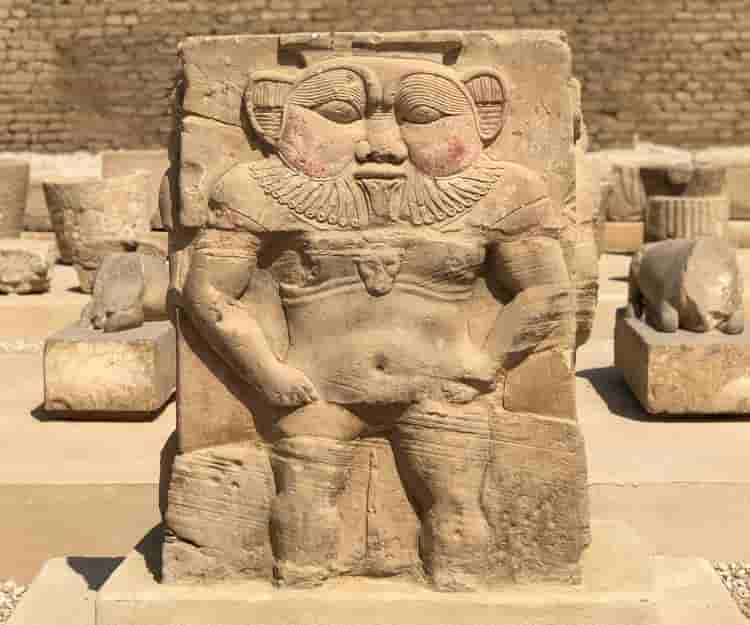God Bes was worshiped in ancient Egypt as the protector of homes, mothers, children, and childbirth. In general, he was considered the defender of homes, performing tasks such as preventing poisonous snakes from entering homes, caring for children and helping women in their tasks.
Another curiosity of the god Bes was that he was represented from the front, unlike the rest of the gods that were represented in profile.
In this sense, numerous ancient Egyptians carried with them an amulet that represented the figure of the dwarf god Bes, who was worshiped as the protector of the house. It was thought that his ugliness (always represented with a very grotesque appearance), drove away evil spirits.
The origin of the god Bes is uncertain. For some experts, the veneration of Bes began in Nubia, and from here it spread to the rest of Ancient Egypt.
For others, however, it comes from the predynastic cultures of the Nile Valley. As far as Egyptologists agree, it is that the cult of Bes began to spread in the New Kingdom.
As with other gods, the cult of the god Bes was exported to other civilizations, such as the Roman, the Phoenician and even the Persian.
Protective power
Despite his grotesque appearance, Bes was a god who enjoyed great popularity among the Egyptians, especially among the popular classes.
God Bes was especially related to women, as he was one of the protective gods of pregnant women and children, along with the hippo goddess Taweret.
His image has appeared in the form of numerous amulets, which were hung on necklaces, mirrors, boxes to store cosmetics, and on the headboards of the beds to protect the ancient Egyptians from nightmares during the hours of sleep.
His image was painted in the houses, especially in the room where the woman in the house gave birth. Thus, the home was protected from the presence of negative spirits, from the bite of poisonous animals (snakes, scorpions) or from suffering from the evil eye because of some envious neighbor.
As protector of the king and the Royal House, he also enjoyed the devotion of the elites.
Bes: God of music and love
Egyptian god Bes was in charge of protecting marriage and, therefore, was also linked to love. But progressively he was also associated with sexual love and pleasures.
As the god of music, Bes can appear represented playing the drum, the lute or the harp. In the myth of the Distant Goddess, the god was part of the procession sent by Ra to appease his daughter with his music and his singing.
Bes: physical appearance
His origin seems to date back to Africa and is always represented naked, with large genitals and a large beard populated head.
His nose is flat and he is always sticking out his tongue. It is thought that at the beginning he covered his back with the skin of a lion (during the New Kingdom he also carried a panther on his chest).
God Bes used to be represented as a small stature, being considered a dwarf.
As ornaments, he sometimes wore a crown of feathers; various instruments such as a harp or a shield and short sword that were the symbols of the protection he exercised.
It was very common to see him represented from the front, simply crouched or in the middle of a dance. There were very few illustrations where he was seen in profile.
Cult of Egyptian God Bes
The main cities where the worship of the God of marriage was venerated and carried out were Memphis and Dendera.
Due to his popularity in ancient Egypt, many citizens used amulets representing Bes; so that they could protect themselves from any evil.
With the passing of time, temples were built in the Ptolemaic period where Bes and his wife Beset were worshiped and he was responsible for curing fertility diseases.
Despite his great popularity, God Bes still causes mystery among religious. Since he was not similar to any other Egyptian God and was considered a foreigner.
As a curiosity, it must be said that the cult of the god Bes spread throughout the Mediterranean Sea, even reaching the coast of Ibiza. One of his oldest images is in the Temple of Hatshepsut, although the most famous is in the Serapeum of Saqqara.








